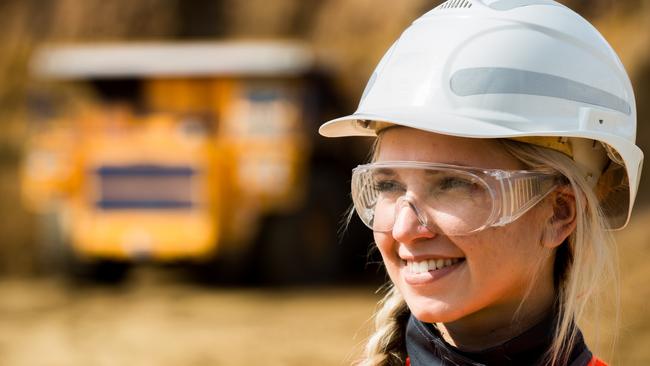Ground Breakers: Heading downstream can double critical minerals jobs pool
Ditching the ‘dig it and ship it’ mentality could double the number of jobs created over the next two decades by investment in critical minerals.

Ditching the “dig it and ship it“ mentality could double the number of jobs created over the next two decades by investment in critical minerals, Canberra’s modelling shows.
Figures tabled with a new critical minerals strategy on Tuesday reveal that embracing
downstream refining and processing is the key to creating more than 250,000 positions in the new green economy.
If these commodities are exported, the critical minerals sector is tipped to produce 15,000 new jobs and add $71.2 billion to GDP by 2040.
But that would lift to 262,600 and $133.5 billion if we take the lead of mining industry figures and establish downstream capabilities.
For the latest mining news, sign up here for free Stockhead daily newsletters
The critical minerals strategy for 2023-2030 will include, as a first step, a $500 million kitty for new investments into critical minerals projects via the Northern Australian Infrastructure Facility.
It doesn’t set the world alight for miners, who could point to the roughly $US370 billion in support pledged for the development of critical minerals for electric vehicles and the like in the US’s Inflation Reduction Act as evidence of the amount other nations are willing to splurge to attract investment.
They would have been disappointed in a succession of federal and state budgets over the past month that delivered little new fiscal support to grow the industry, but the strategy does provide a framework and indication it’s all on the Labor government’s agenda.
Among the key pillars of the critical minerals strategy are to:
- Develop strategically important projects
- Attract investment and build international partnerships
- Enhance First Nations engagement,
- Promote Australia as a world leader in ESG (environmental, social and governance standards), which includes plans to hasten environmental approvals processes “while upholding robust environmental protections”
- Unlock external investment and “grow a skilled workforce”.
MORE FROM STOCKHEAD: ASX explorers prepare for uranium boom | Albermarle buys WA lithium junior | Happy hunting ground for critical minerals
List update needed
The Albanese government, whose resources minister Madeleine King claimed last year that the previous Coalition administration’s critical minerals policies were not closely aligned with emissions reductions, is still intending to update the critical minerals list.
A number of metals mined in Australia and crucial to electric vehicles – including tin, copper and nickel – are not considered critical minerals despite being among those most sought after by explorers and customers, in part because of their geological diversity.
While little new funding has been committed, Association of Mining and Exploration Companies CEO Warren Pearce said the strategy provided an enduring framework for the sector, with as many as 81 projects worth $40 billion in the pipeline.
He said the government should look closely at ways to support minerals outside the list – such as nickel and copper.
“The world needs Australia to develop its critical minerals so that we can decarbonise,” Pearce said.
“As such, AMEC would like to see the government look more closely at copper and nickel, and other areas such as lithium and vanadium redox batteries, which are Australia’s opportunity to establish the full battery supply chain, from pit to battery and into our grid.”
“And while no new funding has been announced alongside the strategy, the recent Critical Minerals Compact between Australia and the US offers the possibility for Australian companies to tap into Inflation Reduction Act incentives.”
“If this can be achieved, it could be a game-changer for the Australian critical minerals industry.”
Pearce also called for more efficient and effective regulatory approvals to remove roadblocks and time barriers to exploration and development.
Visit Stockhead, where ASX small caps are big deals
Leo packs on the tonnes at Goulamina
The $1.13 billion-capped Leo Lithium (ASX:LLL) is up over 130 per cent year to date and looks to have shaken off the stigma associated with its former parent company Firefinch.
Monday’s gain of more than 7 per cent for a company racing to be the ASX’s next lithium producer comes off the back of a massive 48.2 per cent increase in the resource of its Goulamina lithium mine in Mali.
LLL says the resource upgrade, at 211Mt and a grade of 1.37 per cent Li2O, now makes the JV with China’s Ganfeng the world’s fifth largest spodumene deposit.
The company is aiming to begin selling direct shipping ore to support the final stages of construction in the December quarter, ahead of first concentrate before mid-2024.
A new ore reserve is due in August, with measured and indicated resources up 26 per cent to 102.3Mt at 1.45 per cent Li2O.
Bearing an African discount, Leo is worth a little under six times less than Liontown Resources (ASX:LTR), which is aiming to open a similarly sized mine in WA at Kathleen Valley in mid-2024.
Worth bearing in mind that alongside the comfort investors have knowing the latter is in Australia, the Albemarle takeover target also owns all of its discovery.
But Leo and Ganfeng do have significant ramp-up plans, with the initial 500,000tpa operation poised to become a 1Mtpa mine from late in the decade, backing the development of a jointly owned refinery likely to be based in Europe.
Leo boss Simon Hay, previously the MD of Galaxy Resources before its merger with Orocobre to form lithium giant Allkem (ASX:AKE), said the upgrade raised the possibility of extending the mine life beyond 23 years and supported the study to expand Stage 2 to increase Goulamina’s eventual capacity to the magical 1Mt mark.
“We are excited to report a very significant resource upgrade which confirms the outstanding scale, high-grade nature, and further growth potential of the Goulamina Project. An increase at Goulamina of 68.6Mt from a very moderate drilling campaign, is a fantastic outcome,” he said.
“Furthermore, there is scope for additional growth as the deposit remains open at depth and along strike, creating new drilling targets for the geology team.
“This significant upgrade also supports the possible extension of the 23-year mine life of the Goulamina Project and the recent co-operation agreement with Ganfeng.
“A key aspect of the co-operation agreement is for Leo Lithium to conduct an engineering study into raising Goulamina Stage 2 capacity to 500,000tpa, lifting overall Goulamina to 1Mtpa of spodumene concentrate.”
And on the markets?
The mining sector just about made back Monday’s losses early on Tuesday, running 0.58 per cent with some of the bid dawgs leading the way.
IGO (ASX:IGO) and BHP (ASX:BHP) both lifted more than 1 per cent with Pilbara Minerals (ASX:PLS) around 2 per cent in early trade.
It came despite small losses across the bulk of metals overnight, with China’s actual stimulus measures continuing to remain a mystery to investors.
“Base metals were lower across the board amid a lack of detail over potential Chinese stimulus measures,” ANZ’s Madeline Dunk said in a note Tuesday morning.
“The National Development and Reform Commission is mulling a broad package of stimulus measures that it hopes will revitalise growth.
“However, a State Council announcement provided only a few lines of high-level measures. This failed to excite the market, with sentiment further dented with easing supply issues.
“Yunnan is set to ease power curbs and boost aluminium smelting capacity later this month. This follows some recent rain which has enable higher hydropower generation.”
This content first appeared on stockhead.com.au
SUBSCRIBE
Get the latest Stockhead news delivered free to your inbox. Click here


